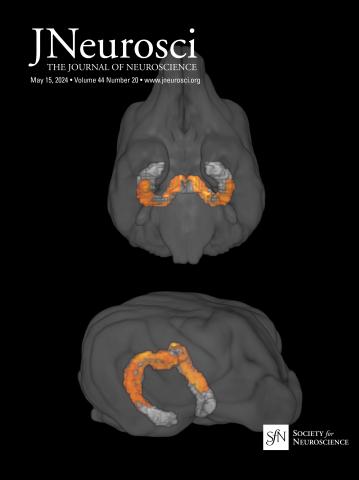小脑蚓部体位控制的感觉运动转化。
IF 4
2区 医学
Q1 NEUROSCIENCES
引用次数: 0
摘要
小脑蚓部通过整合来自多种方式的感觉输入来有效协调运动,在保持姿势和平衡方面发挥重要作用。通过将聚合的感觉信息转化为精确的运动命令,它确保了平稳、自适应的运动控制,使身体能够在动态环境中保持稳定。本文回顾了最近的研究结果,研究了由前蚓和后蚓(结节/小舌)进行的不同神经计算。具体来说,我们研究了这些区域的浦肯野细胞如何整合前庭和本体感觉信号,将自我运动信息从以头部为中心的参考框架转换为以身体为中心的参考框架,这对于在应对意外运动时保持精确的姿势控制至关重要。此外,我们认为最近的研究结果表明,在自主运动过程中,前蚓中的浦肯野细胞通过整合运动输入和感觉信号,选择性地抑制前庭脊髓通路的反应。考虑到前蚓在运动等自愿行为中保持平衡的作用,它的抑制可以防止适得其反的稳定反射,从而实现目标导向的空间运动。相比之下,包括结节和小舌的后蚓部整合来自耳石和半规管的前庭输入,以保持相对于重力的平衡。因此,我们假设小叶结节中的浦肯野细胞不会像在前蚓中观察到的那样产生抑制信号,而是不断地计算我们在空间中的方向,而不管运动是自愿产生的还是意外产生的。如果我们的假设是正确的,结节/小舌将有效地提供关于相对于重力的自我运动的一致的“基本事实”信息。本文章由计算机程序翻译,如有差异,请以英文原文为准。
Sensorimotor Transformations for Postural Control in the Vermis of the Cerebellum.
The cerebellar vermis plays an essential role in maintaining posture and balance by integrating sensory inputs from multiple modalities to effectively coordinate movement. By transforming convergent sensory information into precise motor commands, it ensures smooth, adaptive motor control, enabling the body to maintain stability in dynamic environments. This review examines recent findings that investigate the distinct neural computations performed by the anterior vermis and posterior vermis (nodulus/uvula). Specifically, we examine how Purkinje cells in these regions integrate vestibular and proprioceptive signals to convert self-motion information from a head-centered to a body-centered reference frame, which is essential for maintaining precise postural control in response to unexpected movements. Additionally, we consider recent findings showing that, during voluntary self-motion, Purkinje cells in the anterior vermis selectively suppress responses in the vestibulospinal pathway by integrating motor inputs with sensory signals. Given the anterior vermis's role in maintaining balance during voluntary behaviors such as locomotion, its suppression prevents counterproductive stabilizing reflexes, enabling goal-directed movement through space. In contrast, the posterior vermis, encompassing the nodulus and uvula, integrates vestibular inputs from both the otoliths and semicircular canals to maintain equilibrium relative to gravitational forces. We thus hypothesize that Purkinje cells in the nodulus/uvula do not generate suppression signals like those observed in the anterior vermis but instead continuously compute our orientation in space, regardless of whether movement is voluntarily generated or unexpected. If our hypothesis is correct, the nodulus/uvula would effectively provide consistent "ground truth" information about self-motion relative to gravity.
求助全文
通过发布文献求助,成功后即可免费获取论文全文。
去求助
来源期刊

Journal of Neuroscience
医学-神经科学
CiteScore
9.30
自引率
3.80%
发文量
1164
审稿时长
12 months
期刊介绍:
JNeurosci (ISSN 0270-6474) is an official journal of the Society for Neuroscience. It is published weekly by the Society, fifty weeks a year, one volume a year. JNeurosci publishes papers on a broad range of topics of general interest to those working on the nervous system. Authors now have an Open Choice option for their published articles
 求助内容:
求助内容: 应助结果提醒方式:
应助结果提醒方式:


